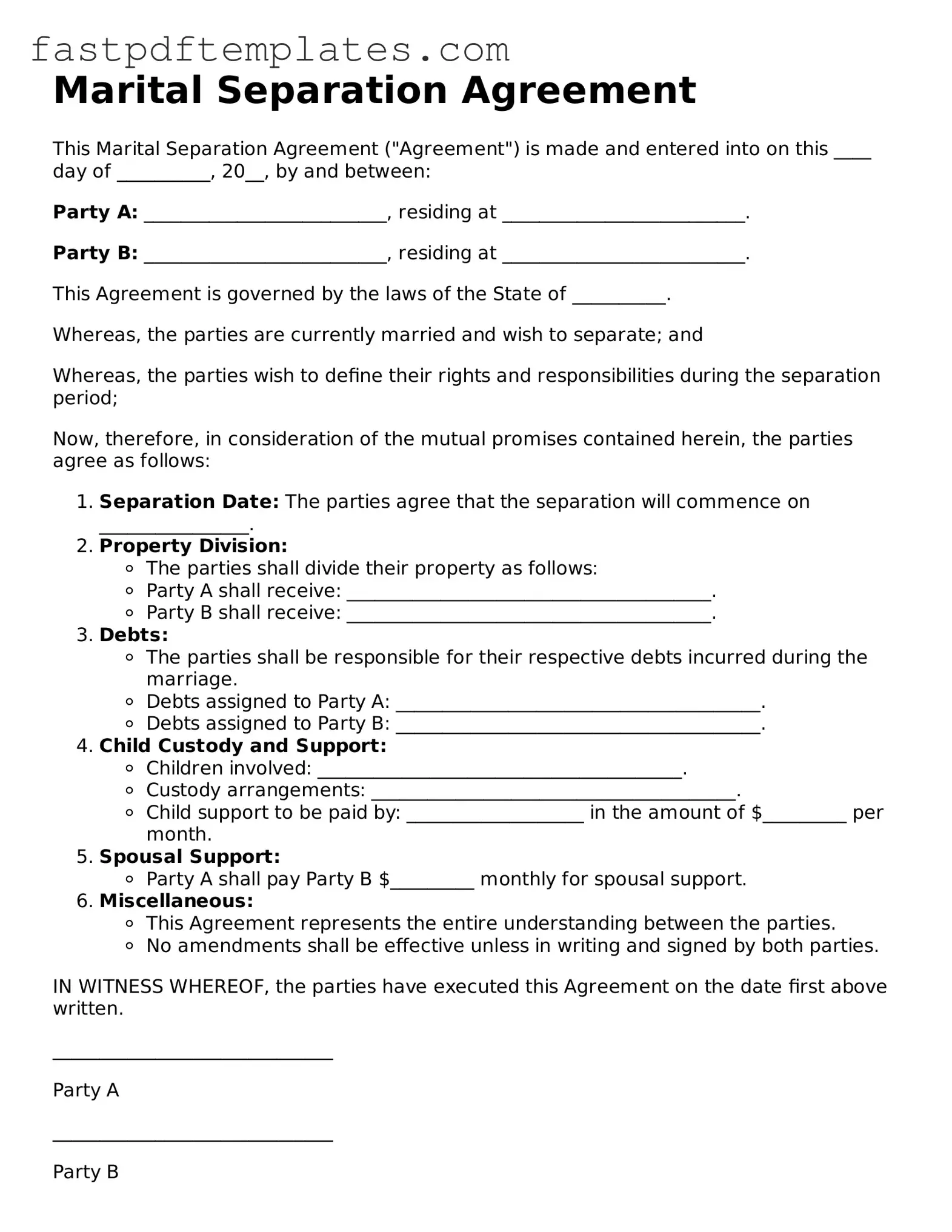Marital Separation Agreement
This Marital Separation Agreement ("Agreement") is made and entered into on this ____ day of __________, 20__, by and between:
Party A: __________________________, residing at __________________________.
Party B: __________________________, residing at __________________________.
This Agreement is governed by the laws of the State of __________.
Whereas, the parties are currently married and wish to separate; and
Whereas, the parties wish to define their rights and responsibilities during the separation period;
Now, therefore, in consideration of the mutual promises contained herein, the parties agree as follows:
- Separation Date: The parties agree that the separation will commence on ________________.
- Property Division:
- The parties shall divide their property as follows:
- Party A shall receive: _______________________________________.
- Party B shall receive: _______________________________________.
- Debts:
- The parties shall be responsible for their respective debts incurred during the marriage.
- Debts assigned to Party A: _______________________________________.
- Debts assigned to Party B: _______________________________________.
- Child Custody and Support:
- Children involved: _______________________________________.
- Custody arrangements: _______________________________________.
- Child support to be paid by: ___________________ in the amount of $_________ per month.
- Spousal Support:
- Party A shall pay Party B $_________ monthly for spousal support.
- Miscellaneous:
- This Agreement represents the entire understanding between the parties.
- No amendments shall be effective unless in writing and signed by both parties.
IN WITNESS WHEREOF, the parties have executed this Agreement on the date first above written.
______________________________
Party A
______________________________
Party B
______________________________
Notary Public
